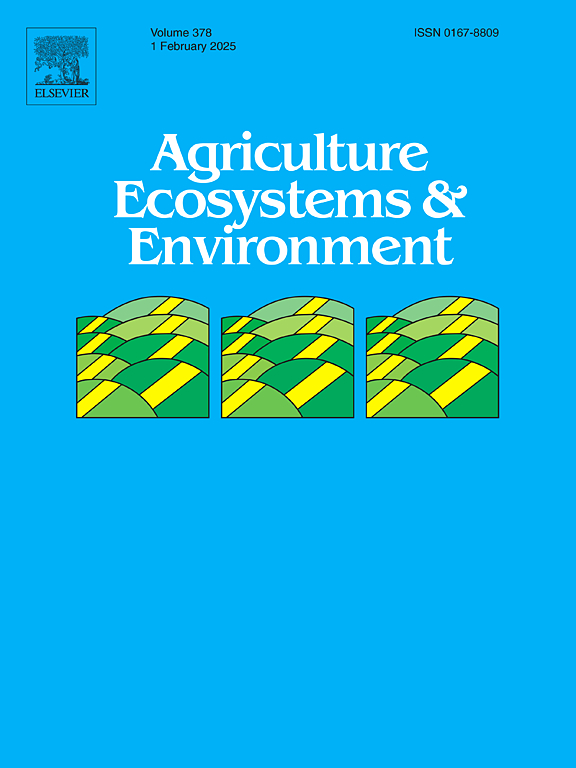Short-term effect of grazing on net ecosystem exchange and fluxes of greenhouse gases in C3 and C4 pastures during the growing season
IF 6
1区 农林科学
Q1 AGRICULTURE, MULTIDISCIPLINARY
引用次数: 0
Abstract
Pastures play an important role in the livestock feed production and global cycle of greenhouse gases. The response of summer and winter pastures to livestock grazing might be different due to environmental requirements and plant physiology. A dynamic chamber technique consisting of a set of 8 automated chambers was used to quantify the fluxes of greenhouse gases, soil temperature and moisture in C4 (kikuyu grass) and C3 (ryegrass) pastures. The kikuyu pasture was slashed (mulching) at the start of the trial because of large accumulation of biomass. Plant biomass samples were taken at the start of the trial, before and after grazing, and at the end of the trial to measure plant production in the pre-grazing, grazing, and post-grazing periods. Aboveground biomass production in the ryegrass pasture was 29.1 and 54.3 kg dry matter ha−1 day−1, and in the kikuyu pasture was 27.8 and 73.1 kg dry matter ha−1 day−1 for the grazed and ungrazed areas, respectively. The ryegrass pasture was a net sink of carbon dioxide equivalent (global warming potential) in all periods, whereas the kikuyu pasture was a source of carbon dioxide equivalent during pre-grazing and grazing periods due to decomposition of slashed biomass and shifted to a sink of carbon dioxide equivalent in the post-grazing period. During the post-grazing period in the ryegrass pasture, an average of 0.85 and 3.25 ± 0.31 kg carbon dioxide equivalent per kg of aboveground biomass change was taken up in grazed and ungrazed treatments, respectively. The kikuyu pasture captured 0.41 ± 0.252 and 0.73 ± 0.218 kg carbon dioxide equivalent per kg of standing aboveground biomass change in grazed and ungrazed treatments of the post-grazing period, respectively. Results of the present study suggested that slashing and mulching kikuyu pastures releases carbon dioxide to the atmosphere and well-managed pastures have the potential to offset the emissions from enteric methane production of grazing cattle being part of the carbon cycle in grazing livestock production systems.
求助全文
约1分钟内获得全文
求助全文
来源期刊

Agriculture, Ecosystems & Environment
环境科学-环境科学
CiteScore
11.70
自引率
9.10%
发文量
392
审稿时长
26 days
期刊介绍:
Agriculture, Ecosystems and Environment publishes scientific articles dealing with the interface between agroecosystems and the natural environment, specifically how agriculture influences the environment and how changes in that environment impact agroecosystems. Preference is given to papers from experimental and observational research at the field, system or landscape level, from studies that enhance our understanding of processes using data-based biophysical modelling, and papers that bridge scientific disciplines and integrate knowledge. All papers should be placed in an international or wide comparative context.
 求助内容:
求助内容: 应助结果提醒方式:
应助结果提醒方式:


